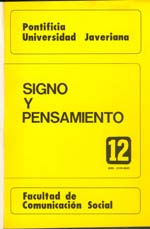Abstract
“La imagen-Movimiento”, tiene la singularidad de ser a la vez un gran libro filosófico y de cine indivisiblemente- comentamos después con el autor esta singularidad-, parte de la idea que si, como se le dice a menudo, la esencia de este movimiento no ha sido, generalmente comprendida (sino intuitivamente y prácticamente por los grandes cineastas). La recurrencia de Deleuze al Bergson de “Materia y Memoria”, barre la interpretación fenomenológica reductora, que aún a través de recientes transformaciones de inspiración psicoanalítica ha dominado toda aproximación global del cine, después de la guerra, trayendo este a los temas abstractos de la percepción natural (por ejemplo, el debate sobre la impresión de realidad). El librode Deleuze habla del cine concretamente, de las películas que queremos, de los grandes movimientos, y de los grandes autores que componen la historia del cine; aún si (de esto también hablaremos aquí) La imagen movimiento comienza con la advertencia de que “este estudio no es una historia del cine”This journal is registered under a Creative Commons Attribution 4.0 International Public License. Thus, this work may be reproduced, distributed, and publicly shared in digital format, as long as the names of the authors and Pontificia Universidad Javeriana are acknowledged. Others are allowed to quote, adapt, transform, auto-archive, republish, and create based on this material, for any purpose (even commercial ones), provided the authorship is duly acknowledged, a link to the original work is provided, and it is specified if changes have been made. Pontificia Universidad Javeriana does not hold the rights of published works and the authors are solely responsible for the contents of their works; they keep the moral, intellectual, privacy, and publicity rights.
Approving the intervention of the work (review, copy-editing, translation, layout) and the following outreach, are granted through an use license and not through an assignment of rights. This means the journal and Pontificia Universidad Javeriana cannot be held responsible for any ethical malpractice by the authors. As a consequence of the protection granted by the use license, the journal is not required to publish recantations or modify information already published, unless the errata stems from the editorial management process. Publishing contents in this journal does not generate royalties for contributors.


